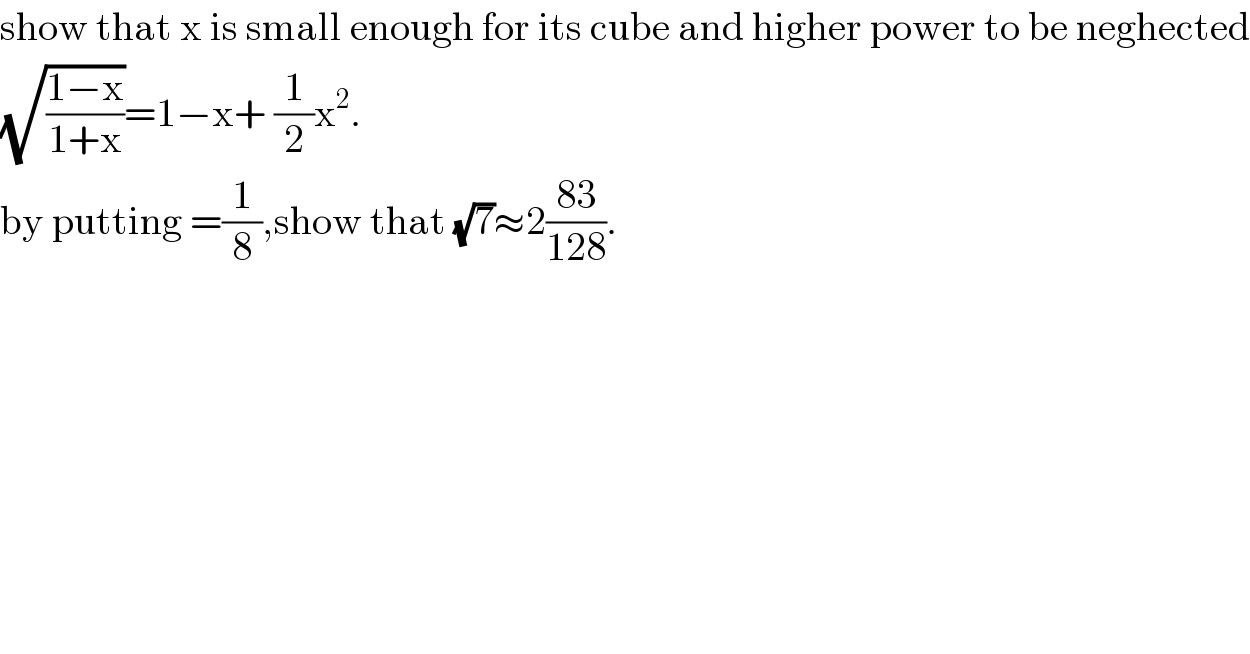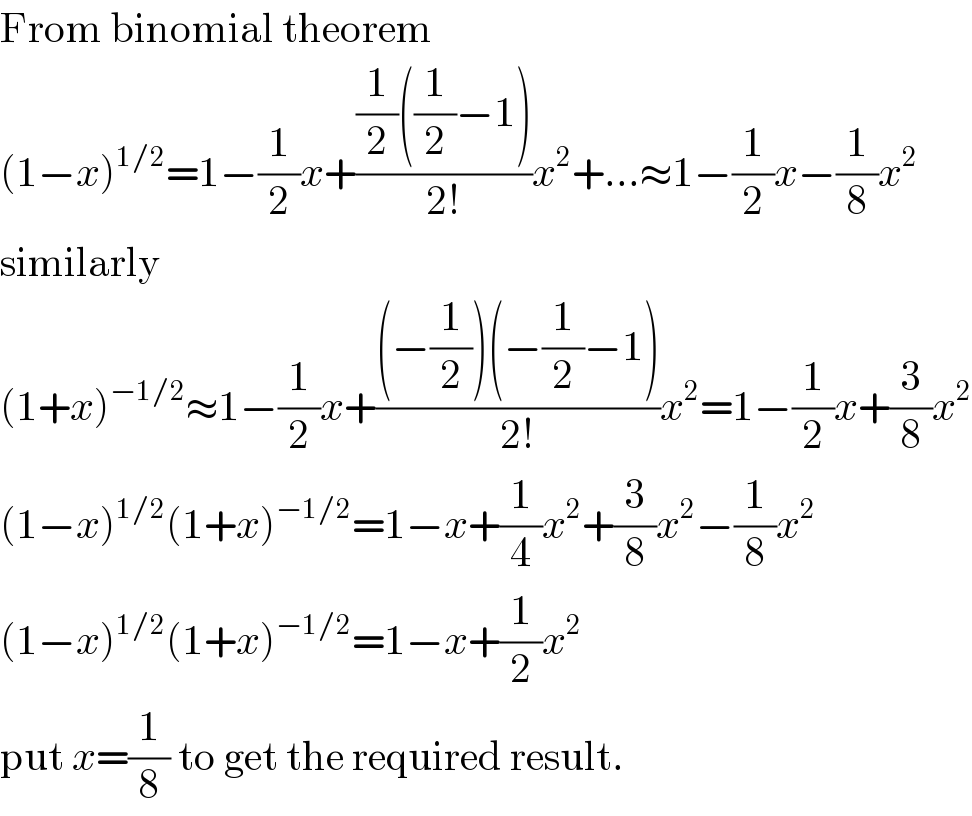
Question Number 9576 by j.masanja06@gmail.com last updated on 18/Dec/16

$$\mathrm{show}\:\mathrm{that}\:\mathrm{x}\:\mathrm{is}\:\mathrm{small}\:\mathrm{enough}\:\mathrm{for}\:\mathrm{its}\:\mathrm{cube}\:\mathrm{and}\:\mathrm{higher}\:\mathrm{power}\:\mathrm{to}\:\mathrm{be}\:\mathrm{neghected} \\ $$$$\sqrt{\frac{\mathrm{1}−\mathrm{x}}{\mathrm{1}+\mathrm{x}}}=\mathrm{1}−\mathrm{x}+\:\frac{\mathrm{1}}{\mathrm{2}}\mathrm{x}^{\mathrm{2}} . \\ $$$$\mathrm{by}\:\mathrm{putting}\:=\frac{\mathrm{1}}{\mathrm{8}},\mathrm{show}\:\mathrm{that}\:\sqrt{\mathrm{7}}\approx\mathrm{2}\frac{\mathrm{83}}{\mathrm{128}}. \\ $$
Commented by prakash jain last updated on 20/Dec/16

$$\mathrm{From}\:\mathrm{binomial}\:\mathrm{theorem} \\ $$$$\left(\mathrm{1}−{x}\right)^{\mathrm{1}/\mathrm{2}} =\mathrm{1}−\frac{\mathrm{1}}{\mathrm{2}}{x}+\frac{\frac{\mathrm{1}}{\mathrm{2}}\left(\frac{\mathrm{1}}{\mathrm{2}}−\mathrm{1}\right)}{\mathrm{2}!}{x}^{\mathrm{2}} +...\approx\mathrm{1}−\frac{\mathrm{1}}{\mathrm{2}}{x}−\frac{\mathrm{1}}{\mathrm{8}}{x}^{\mathrm{2}} \\ $$$$\mathrm{similarly} \\ $$$$\left(\mathrm{1}+{x}\right)^{−\mathrm{1}/\mathrm{2}} \approx\mathrm{1}−\frac{\mathrm{1}}{\mathrm{2}}{x}+\frac{\left(−\frac{\mathrm{1}}{\mathrm{2}}\right)\left(−\frac{\mathrm{1}}{\mathrm{2}}−\mathrm{1}\right)}{\mathrm{2}!}{x}^{\mathrm{2}} =\mathrm{1}−\frac{\mathrm{1}}{\mathrm{2}}{x}+\frac{\mathrm{3}}{\mathrm{8}}{x}^{\mathrm{2}} \\ $$$$\left(\mathrm{1}−{x}\right)^{\mathrm{1}/\mathrm{2}} \left(\mathrm{1}+{x}\right)^{−\mathrm{1}/\mathrm{2}} =\mathrm{1}−{x}+\frac{\mathrm{1}}{\mathrm{4}}{x}^{\mathrm{2}} +\frac{\mathrm{3}}{\mathrm{8}}{x}^{\mathrm{2}} −\frac{\mathrm{1}}{\mathrm{8}}{x}^{\mathrm{2}} \\ $$$$\left(\mathrm{1}−{x}\right)^{\mathrm{1}/\mathrm{2}} \left(\mathrm{1}+{x}\right)^{−\mathrm{1}/\mathrm{2}} =\mathrm{1}−{x}+\frac{\mathrm{1}}{\mathrm{2}}{x}^{\mathrm{2}} \\ $$$$\mathrm{put}\:{x}=\frac{\mathrm{1}}{\mathrm{8}}\:\mathrm{to}\:\mathrm{get}\:\mathrm{the}\:\mathrm{required}\:\mathrm{result}. \\ $$
